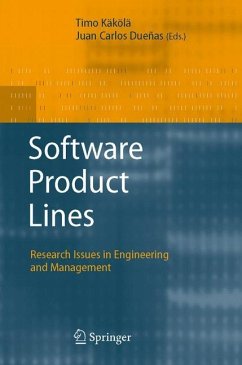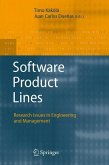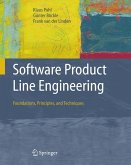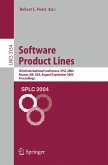Between July 1999 and June 2005 a group of European companies, research institutes, and universities executed the EUREKA-ITEA projects ESAPS, CAFÉ, and FAMILIES on the topic of product line engineering. The projects originated from the need of the industry to improve software engineering performance by organizing product development in product lines. The results obtained within the projects have been implemented in several large industries (e.g., automotive, e-business, medical systems, and mobile phones). They involve a radical shift in software construction and production. The most important research results of the projects are collected in this book. Product line engineering was already applied within industry in the 1980s and presumably earlier. In the 1980s, good architects in many telecommunications c- panies based their architectures on the ideas of David Parnas, who published on the subject of program families . They were facilitated by the CHILL language widely used by the telecommunications companies. This language deploys the same modularity principles as the Modula programming language family. Modularity is a crucial ingredient for implementing systems with a component-based architecture. Being able to compose the products of components is an important mechanism in all product line architectures. In the 1990s, the product line ideas started to gain ground in other industries. Around 1995, the company experiences reached the academia and since then people in companies and academia have collaborated widely on this subject. The ESAPS, CAFÉ, and FAMILIES projects manifest an institutionalized form of this collaboration.
From the reviews: "This book is a highly valuable resource for educators, researchers, and practitioners; it synthesizes the results of the work done by a group of European companies, research institutes, and universities on EUREKAITEA projects ... on the topic of product-line engineering. The book will also help managers and decision makers planning to adopt product-line engineering practices at their companies gain insight into the effort involved." (Raghvinder Sangwan, ACM Computing Reviews, Vol. 49 (4), April, 2008)








